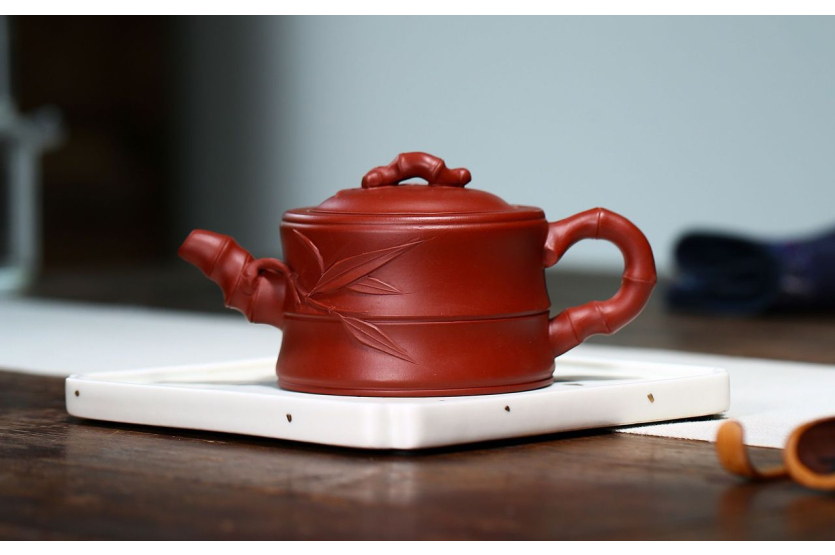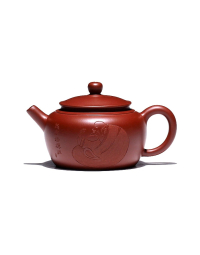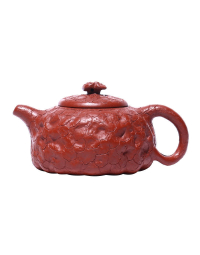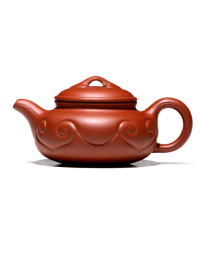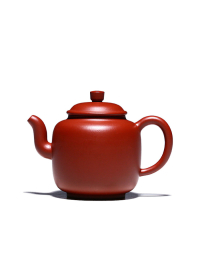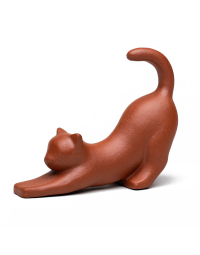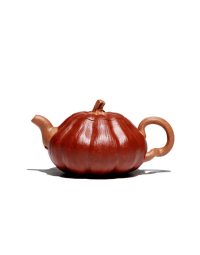Zhu Ni, a type of clay with an orange-red hue, is nowadays one of the most popular raw material for Yixing teapots. For those new to the scene, selecting a zhuni teapot can be a daunting task. As we often receive questions about this zhuni teapots, we've prepared this guide for those who want to learn more about teapots made from this specific clay type.
What Is Zhuni?
But what is Zhuni, really? There is a great deal of confusing material online, with talk of "old zhuni" versus "modern zhuni," and claims that "modern zhuni" is, in fact, "hongni" or a blend of hongni and other Yixing clay. If we use the original definition of “hongni,” then zhuni is a type of hongni. Hongni refers to red clay in Yixing that takes on a red color after firing in a kiln. The character 朱in "zhuni" specifically refers to vermillion or cinnabar red, with a bright-orange red hue. Zhuni teapots are made of hongni that exhibit a range of desirable characteristics for a group of Yixing teapot collectors, including a silky texture, a brilliant shine developed from use, and a bright orange-red hue that contrasted with other darker, rougher hongni clay.
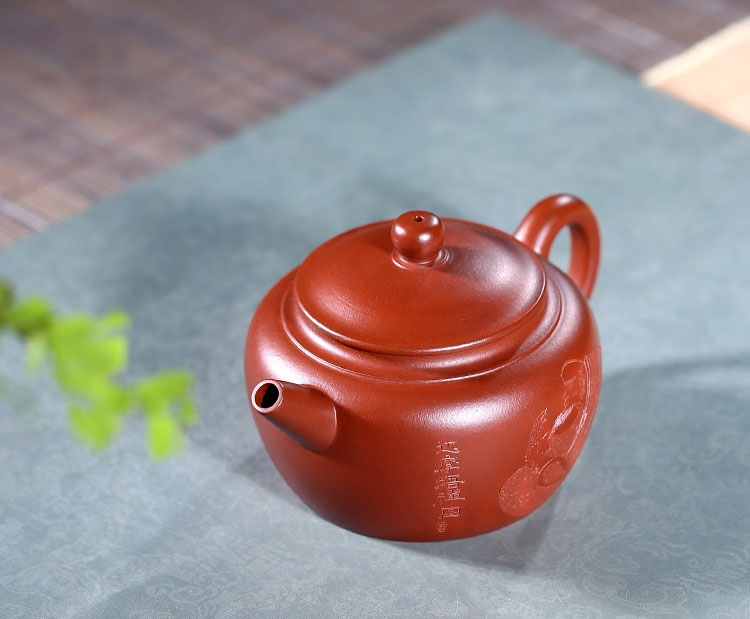
Zhuni can be distinguished from hongni by the appearance and origin of its raw ore. Zhuni ore is sourced from soft mudstone, while hongni is a kind of sedimentary rock. Zhuni ore is delicate and mixes well with water, creating a smooth texture. Hongni, on the other hand, is harder and sandier.
Another distinct characteristic of Zhuni is how it responds to firing. All zisha, including Zhuni, will shrink to some extent when fired in a kiln, but not all zisha experience the same level of shrinkage. Hongni shrinks at a rate of approximately 13%, whereas Zhuni will shrink by 17-25%. This high rate of contraction increases the likelihood of Zhuni teapots breaking in the kiln, leading to fewer surviving compared to other types of zisha. Modern firing techniques have allowed artists to optimize the process, making it possible to create more pots without losing as many in the kiln. Nonetheless, most studios remain cautious, avoiding making larger Zhuni teapots that are more prone to breakage. Most Zhuni teapots are 160ml or smaller.
Zhuni vs Zini
When it comes to tea pairings, selecting the right tea for a Yixing teapot is subjective. However, it is generally agreed that Zhuni is superior to other types of Yixing clay (known as zisha) when it comes to fragrant teas, such as Taiwan high mountain oolongs. It also pairs well with black teas and other highly roasted oolongs. Compared to other Zini (purple clay), Zhuni is denser, with smaller pores that trap less air between them. As a result, it conducts heat more effectively and absorbs fragrance less than zini or duanni. This makes it function more like porcelain, losing heat quickly to avoid overcooking delicate teas while enhancing the fragrance's concentration. Zisha like zini and especially duanni, on the other hand, are often preferred to "round out" harsher notes in tea, such as a young strong sheng puer.
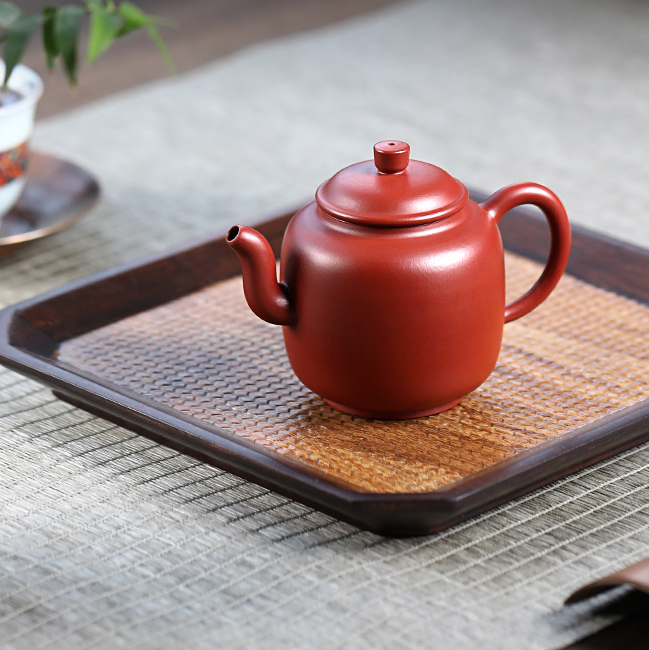
What is Old Zhu Ni? Is It Still Available?
As a term in the zisha industry, Old Zhuni (Lao Zhuni) refers to the aged clay used to make teapots. But what sets it apart from antique Zhuni? Before the clay can be shaped and fired, it must undergo aging for its organic matter to decompose and ferment. New Zhuni (Xin Zhuni) is aged for 1-2 years, while Old Zhuni has been left to ferment for 3 years or more. It’s what makes this type of clay highly valued in Yixing.
It’s a common misconception that Zhuni is extinct. The Yixing government may have restricted mining operations in 2005, but it does not mean that production has stopped entirely. Miners still extract zisha from official mines, as well as from construction projects and unauthorized sites around town. Moreover, a considerable amount of zisha clay, including Zhuni, has been stockpiled in storage over the years.
Despite being scarce compared to other zisha clays, Zhuni is still available in limited quantities. However, some sellers may exaggerate its rarity to drive up the value of teaware made from it. So, while Zhuni may be rare, it is not entirely impossible to purchase, as long as one is willing to pay the price.
So How Rare Is It?
It's important to understand the rarity of zhuni and how to avoid fake teapots in the market. Only a small proportion of zisha ore (3-5%) from mountains like Huang Long Shan contain zhuni.
How Do I Know If a Teapot is Made from Authentic Zhu Ni?
Fake Yixing teapots flood the market, and zhuni teapots are no exception. With rare zhuni ore in short supply, many fakes have emerged that try to mimic the appearance of zhuni using non-zisha clay, impure clay, chemicals, and coloring mixed with real zisha or other clay. Some fakes are easy to spot, but others that use zisha clay mixed with chemicals and pigments are trickier to distinguish for those who haven't used genuine zhuni teapots before.
To avoid fakes, look for teapots that feel sandy or muddy to the touch, are excessively shiny before using, or have a chemical smell. Steer clear of teapots that seem too good to be true, as zhuni teapots being sold for less than $50 USD usually have something wrong with them.
If you're unsure about identifying genuine zhuni teapots, educate yourself about zisha and observe the process of making Yixing teapots. Study different teapots available in the market, and ask around to gain a better understanding of the process. To ensure that the products provided are genuine and safe, we recommend to order from our collection of Authentic Yixing teapot sourced from reputable studios and certified artists.
It's also essential to distinguish between zhuni mixed with other zhuni clay, mixed with other zisha clay, and zhuni mixed with non-zisha clay and/or chemicals and pigments. While mixing different types of zisha clay is a normal practice in the industry, it's safe to use zisha that contains only zisha clay and isn't mixed with other types of clay and pigments. Real zhuni used for teapots commonly consists of clay mixed from different zhuni ores from different mines or zhuni mixed with small amounts of other zisha. Remember to always look for larger particles in the skin of the teapot, also referred to as "bones" and "meat."
